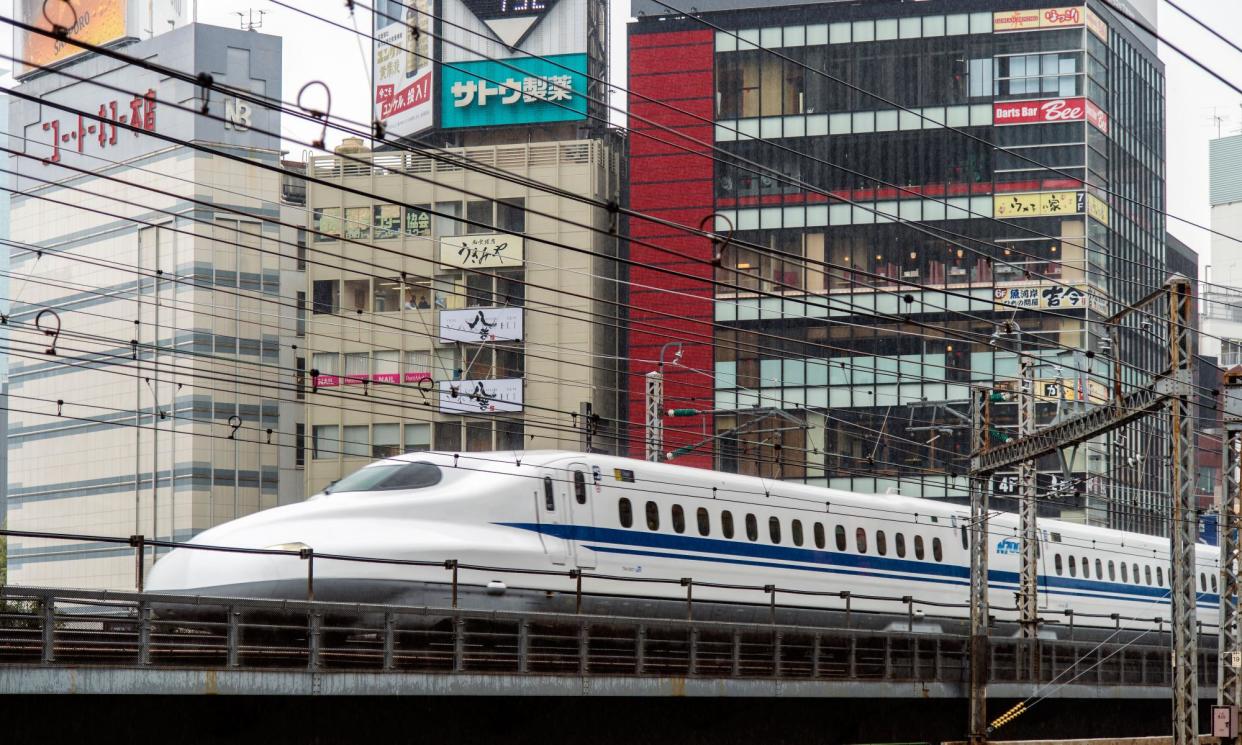Australia to spend $80m on business case for Sydney-Newcastle high speed rail

The Albanese government will spend $80m developing a business case for the Sydney-to-Newcastle stretch of its east coast high speed rail line, as the decades-long project inches further forward.
The transport minister, Catherine King, said the allocation of $78.8m was part of Labor’s $500m election commitment to the early stages of high speed rail, with the initial Sydney-Newcastle leg representing a “crucial waypoint” on the project.
The newly formed High Speed Rail Authority (HSRA) will deliver the business case to the government by the end of the year, and will determine a proposed alignment, station locations and the type of train sets to be used.
Related: Albanese’s high speed rail agency on a slow track, saying it’s busy with ‘strategic plan’
Crucially, the HSRA will also develop a cost estimate and construction timeframe for the Sydney-Newcastle line.
“High-speed rail is a transformative project that will change travel between cities and provide a catalyst for economic development in regional areas,” King said.
“This is more than just a transport project. It will create jobs, improve productivity and support Australia’s progress on environmental outcomes,” she said.
The Albanese government has been heavily criticised for the slow pace of its high speed rail project.
It took almost seven months after the HSRA’s formation last June to appoint an inaugural CEO – former Sydney Metro project delivery head Tim Parker. The Greens’ transport spokesperson Elizabeth Watson-Brown, said that delay was “pretty insulting to Australians”.
Watson-Brown was also critical of King for saying she was open to looking at private sector financing, such as pension funds. She accused the government of “grossly” underfunding the project and working to a delivery timeframe of the 2060s for the entire east coast line, claiming it could be built much faster.
In December, the opposition transport spokesperson, Bridget McKenzie, said the government had achieved “absolutely nothing” towards its fast rail ambition.
The first section of the high speed track, which aims to deliver a 45-minute trip between Sydney and Newcastle, would be a significant improvement on the existing line – service times have gotten slower over the past century to a current express trip time of about 2.5 hours. The government has also committed to opening an HSRA office in Newcastle.
However, King, speaking to the ABC earlier this month, suggested the government would not make the existing trip between Sydney and Newcastle faster before the first stretch of the high speed line was completed, 10 years from now at the earliest.
The HSRA only formally came into existence last June after legislation was passed paving the way for the abolishment of the National Faster Rail Agency (NFRA), a body established by the Morrison government in 2019, which did not deliver on earlier high-speed rail projects.
Related: NSW slams brakes on high-speed rail plans after spending $100m on studies
The board first announced it was working to identify its inaugural CEO on 13 June – the day the HSRA came into existence. It took a month and a half, until 26 July, for the job advertisement to be listed online.
Interviews for the CEO role had been conducted by October, the HSRA’s interim chief, Andrew Hyles, told a budget estimates hearing that month.
The glacial pace of the government’s fast rail project was laid bare during that hearing, when Hyles told senators detailed planning would not begin until 2024 because the organisation was busy completing its “organisational strategy”.
In response to questions about the project’s progress, Hyles referred senators to a “corporate plan” on its website, drawing comparisons to Utopia, an Australian TV series satirising the absurdity of government bureaucracy.
Sydney-Newcastle has long been identified in high speed rail proposals as an ideal initial corridor, but experts have flagged the costly and logistically complicated tunnelling requirements.
In 2019, the New South Wales government committed to build its own fast rail line between the two cities, but quietly dropped the idea after spending four years and roughly $100m on feasibility studies.
Australia’s significant nationwide infrastructure pipeline has seen the costs of construction inflate and has led recently to some rail projects, including the Melbourne-Geelong fast rail, being axed.


